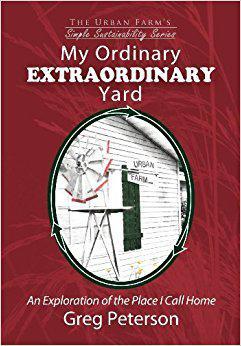Building my Wicking Garden Bed
Building my Wicking Garden Bed By Raymond Jess Updated: May 2017 with new pictures at bottom.Check out Wicking Beds 2.0 and Wicking Beds 3.0 next!I discovered wicking garden beds when…
Building my Wicking Garden Bed By Raymond Jess Updated: May 2017 with new pictures at bottom.Check out Wicking Beds 2.0 and Wicking Beds 3.0 next!I discovered wicking garden beds when…
215: Suzanne Bontempo on Gardening without Pesticides. Contemplating the best options for:If, when, and what type of insect control to use in the garden. – – – – Suzanne has…
Greg on Worm Composting: Channel 15
Greg on Channel 12: Worm Composting
Fellow permaculturist and gardener Cricket Aldridge joins Greg in the studio to talk about her urban farm and how much she loves everything about it. She tells about some of her favorite aspects and what she’s able to grow or make from her harvests, from canning to mead making and many other things besides.
By Anne-Marie Miller. About twice a year I make a trip to my favorite horse barn to pick up a load of well-composted horse manure for my garden. When I say “pick up” that makes it sound so easy.
Greg talks with one of the foremost experts on soil health Dr. Elaine Ingham and learns a lot about the world of microbiological life in the soil. Her studies have been amazing and it is easy to see how being a student in one of her classes can be quite informative. She tells about how she became so focused on the microbiological life in the soil and educates us on the importance of those first few dozen inches of earth our food is grown in. This is a mini course of science in just one podcast.
Greg has found an east coast twin when he talks to a fruit tree farmer named Michael Phillips who has been growing apple trees in New Hampshire with a care that works for the health of the trees and the ecosystem in which they live. Michael grows and sells fruit trees and he focuses a lot of offering tree growing education as well. He shares his main points of growing healthy fruit trees and explains why some of the steps are so beneficial to trees.
Maximizing functions from landscape elements to save time, energy and money. Greg meets Shawn who explains a key permaculture concept of having multiple functions from one element. Shawn tells how he has designed many projects focusing on elements that have at least seven functions each. With his experience, he has brought together several examples in his new book and so he shares some ideas in this interview.
Greg talks to Brian Smith, a transplant to Arizona who needed to improve his gardening results and found out about biochar. Brian explains the process that was used over 2000 years ago, to transform burned wood into a long lasting organic super buffet with nutrients galore. He tells how he was so interested in the results that he took his research to the point that he can now make his own biochar in his backyard.
